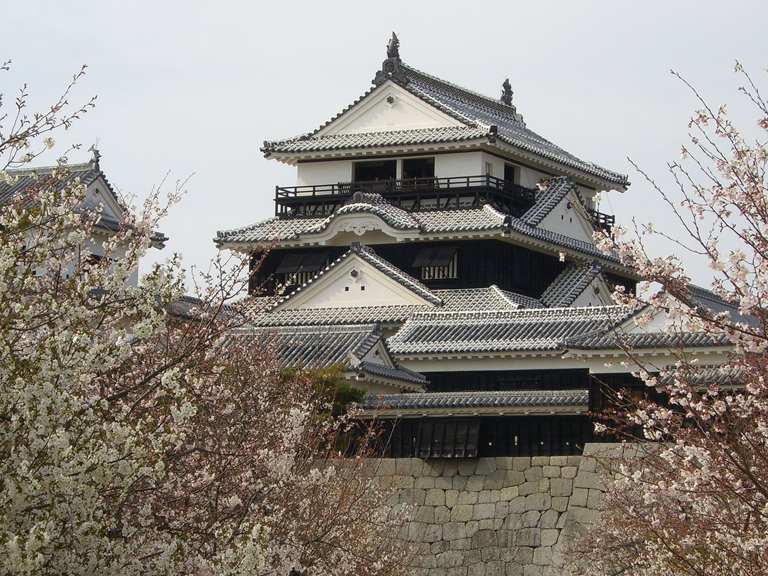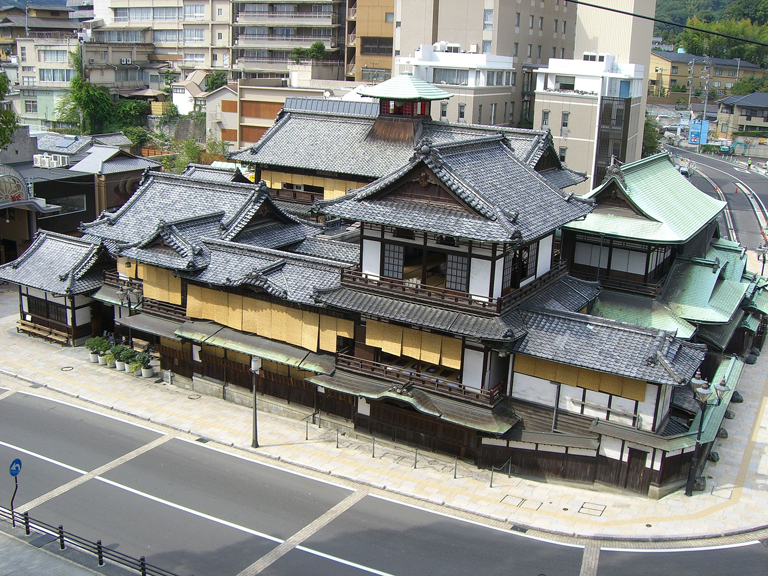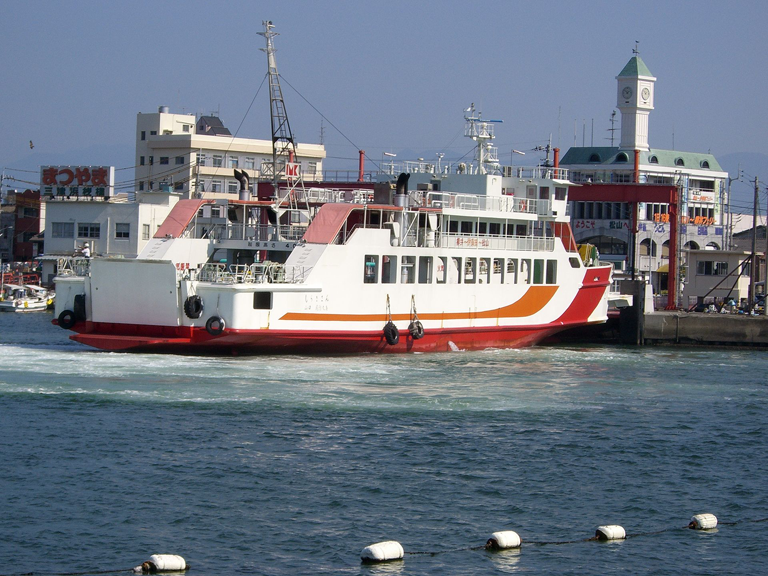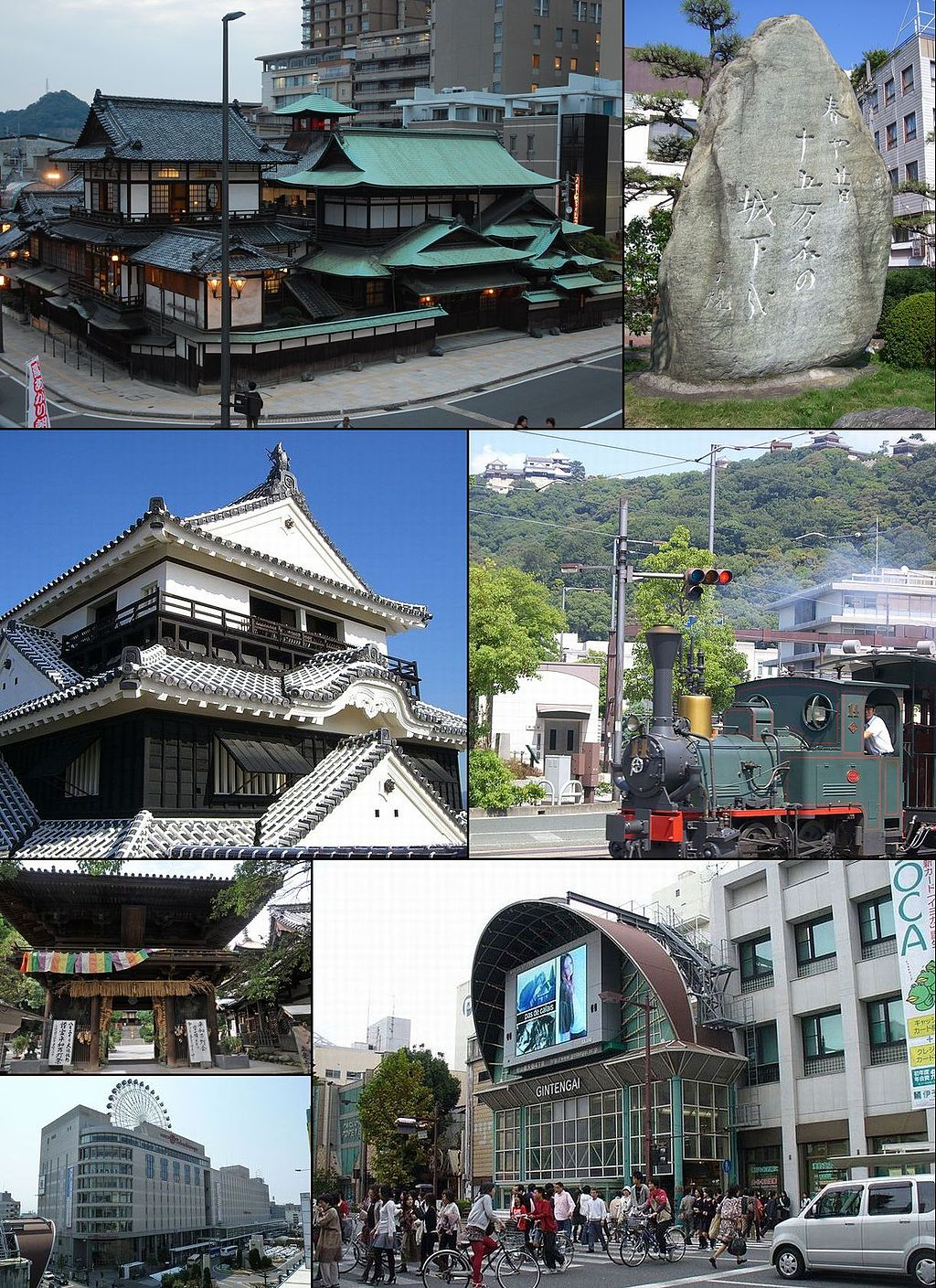



Matsuyama Guide
Matsuyama is the capital city of Ehime Prefecture on the island of Shikoku in Japan and also Shikoku's largest city, with a population of 516,459 as of December 1, 2014. It is located on the northeastern portion of the Dogo Plain. Its name means "pine mountain". The city was founded on December 15, 1889.
In the twentieth century, various mergers joined the castle town with neighboring Dogo, Mitsuhama, and other townships, aided by urban sprawl, creating a seamless modern city that now ranks as the largest in Shikoku.
Mitsuhama, formerly also known as Mitsugahama, is the main port of Matsuyama, Ehime, Japan. Mitsuhama absorbed the village of Furumitsu in 1925 and Shinhama in 1937. In 1940 Mitsuhama was merged into the city of Matsuyama. [Apparently, the U.S. Navy's maps were out-of-date in 1945 when USS Elmore logged in a destination to the no-longer-independent city of "Mitsugahama."]
The city is known for its hot springs, among the oldest in Japan, and is home to the Dogo Onsen Honkan, a Meiji Period wooden public bathhouse dating from 1894. A second favorite tourist spot is Matsuyama Castle. Eight of the eighty-eight temples in the Shikoku Pilgrimage are in Matsuyama.
Matsuyama has several important museums. The Museum of Art, Ehime is the city's main art museum, its collections emphasizing the works of regional artists. The Shiki Memorial Museum is a museum that focuses on the life and work of Masaoka Shiki, with special attention to his contribution to haiku. The Saka no Ue no Kumo Museum features exhibits connected with the famous novel and television series. There is a Juzo Itami museum dedicated to the famous film director.
Famous products of Matsuyama include tarts and Botchan dango. In the 17th century, the lord of Matsuyama castle Sadayuki Matsudaira introduced the process of tart-making, originally brought to Japan by the Portuguese, to Matsuyama. At first, it was a Castella with jam. According to legend Sadayuki made some changes, such as adding red bean paste. Now there are many kinds and makers of tarts in Matsuyama; some add yuzu paste or chestnut to the red bean paste. In addition to tarts, Botchan dango is also a famous product of Matsuyama. Botchan dango was named after the famous novel Botchan by Natsume Soseki. It consists of three bean paste beads of three flavors, matcha, egg, and red bean paste. Within the paste is contained mochi.
Matsuyama is the site of a number of festivals, including the Dogo Festival, held in the spring, the Matsuyama Festival, held in August, and the Fall Festival, held in October, which features battling mikoshi. [A mikoshi is a divine palanquin, a covered litter for one passenger, consisting of a large box carried on two horizontal poles by four or six bearers. Shinto followers believe that it serves as the vehicle to transport a deity in Japan while moving between main shrine and temporary shrine during a festival or when moving to a new shrine.]
Matsuyama has a well-developed transport network. It is connected to the Japanese national railway network by Matsuyama Station on the Yosan Line. It also has a network of suburban railways run by the Iyo Railway, which is centred on Matsuyama City Station. Iyo Railway also operates a system of trams and busses, which serve as the city's main modes of public transportation. Matsuyama is one of the few Japanese cities that did not do away with its original tram system, which has continually operated from 1887. Matsuyama Airport offers flights to Tokyo, Seoul, Shanghai, and various other cities. There is regular ferry service to Hiroshima and regular night ferries to Kobe, Kokurakita-ku, Kitakyushu, and several other destinations. Also, hydrofoil service exists between Hiroshima and a few other destinations.
Matsuyama has a humid subtropical climate with hot summers and cool winters. Precipitation is significant throughout the year, and is heavier from April to July as well as in September.
Source: Wikipedia

Matsuyama Castle Tower. Click to zoom.

Dogo Hot Spring main buildings seen from the mountain, said to be the oldest hot spring in Japan. Click to zoom.

A ferry at Mitsuhama port. Click to zoom.

From top left: Dogo Onsen Honkan, Stone monument of Shiki Masaoka, Matsuyama Castle, Botchan train, The gate of Ishite-ji, Iyotetsu Matsuyama-shi Station, Gintengai Street. Click to zoom.


